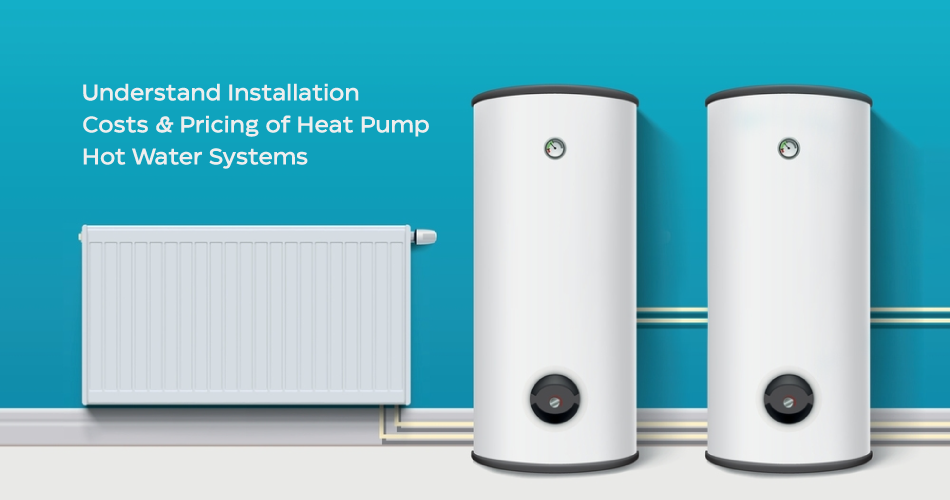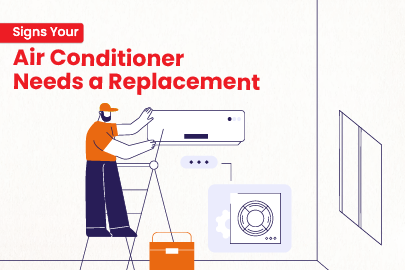Do you like to take a polar bear plunge in your own bathtub every morning? Neither do we! Heat pump hot water systems are crucial to modern homes and buildings. They provide a reliable source of hot water for various applications such as cooking, cleaning, and bathing. There are several types of hot water systems that can be installed, including tankless or on-demand systems, storage tank systems, and solar water heaters. Hot water system installation cost also varies depending on the type and size of the system you need.
Heat pump hot water systems play an essential role in ensuring the comfort and convenience of residents and can help to save energy and costs in the long run.
Heat pump hot water systems
A heat pump hot water system is a type of hot water system that uses refrigerants to heat water. A heat pump is a device that uses a small amount of electrical energy to transfer heat from one place to another. In a heat pump hot water system, the refrigerant absorbs heat from the air, Installed outside the building and uses it to heat the water in a storage tank. This process is known as "heat exchange."
Heat pump hot water systems are considered to be more energy-efficient than traditional electric hot water systems because they use less electricity to heat the water. They also work well in mild climates and can be a good option for homes that want to reduce their carbon footprint.
Heat pump hot water systems typically have two main components: the heat exchanger unit and the storage tank. The heat exchanger unit is usually located outside the building, and the storage tank is inside. Some systems are designed to heat the water as it is used, while others store hot water in a tank for later use.
Benefits of Heat pump hot water systems
One of the key benefits of a heat pump hot water system installation is that it is more energy-efficient than traditional electric hot water systems. They can also be a good option for homes that want to reduce their carbon footprint.
Heat pump hot water systems can be a good option for those looking for an energy-efficient, cost-effective, and environment-friendly solution for hot water provision.
What are the types of heat pump systems?
There are several types of heat pump systems, but two of the most used types are as follows:
• Air-Source Heat Pumps
These use the air outside as a heat source. They transfer heat from the outside air to the inside of a building during the winter.
• Ground-Source Heat Pumps (Geothermal Heat Pumps)
These use the thermal energy stored in the ground to heat. They Transfer heat from the ground to the building to heat exchanger to heat the water in storage tank.
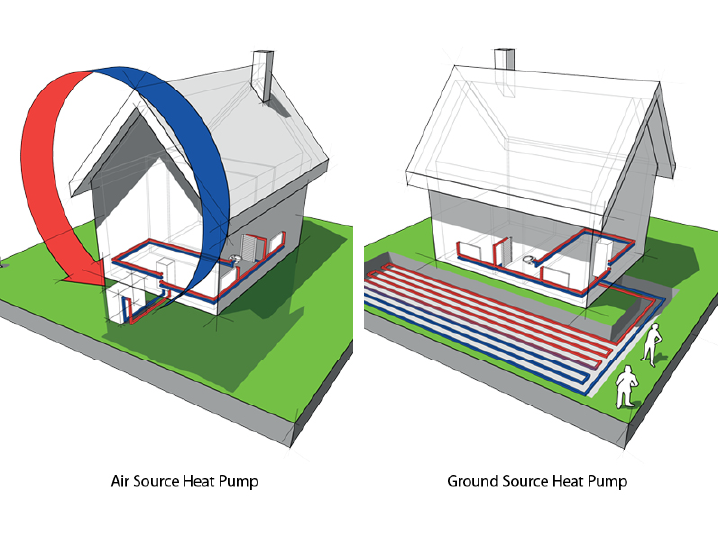
Understanding the ideal size for heat pump hot water system installation
The ideal size of a heat pump hot water system depends on several factors, including the size of the home or building, the number of people living or working there, and the local climate.
Generally, a heat pump hot water system should be sized to meet the hot water needs of the building it serves. This can be determined by conducting a load calculation, which takes into account factors such as the number of occupants, the number of bathrooms, and the type of hot water fixtures in the building.
An experienced energy consultant or a plumber should be able to conduct a load calculation and recommend the appropriate size heat pump hot water system for your home or building.
It's also important to note that the size of the heat pump unit should match the size of the hot water tank, meaning that the heat pump should have the capacity to heat the amount of water stored in the tank.
In some cases, oversizing or under sizing the heat pump hot water system can lead to inefficiency and higher operating costs, so it's essential to have proper sizing done.
Choosing the right location for a heat pump hot water system installation
The best location to install a heat pump hot water system is in a well-ventilated area. The location should also be close to the hot water tank and have easy access for maintenance and repairs. Additionally, it is vital to ensure that there is enough space for the heat pump unit and that it is installed according to the manufacturer's specifications and local building codes.
Is a replacement heat pump better than a new one?
Whether to replace or get a brand-new heat pump depends on the condition and age of your current heat pump and the cost of replacement versus the cost of a new unit. A well-maintained heat pump less than 10 years old may only require replacement parts. In contrast, replacing an older or heavily used unit may be more cost-effective. Additionally, newer heat pump models are often more energy efficient, which can result in lower energy costs over time. It's recommended that you consult with an energy consultant to evaluate the condition of your current heat pump and to get an estimate for both replacement and a new unit. They can help you to make an informed decision and take into account any local incentives or rebates that might be available.
How to dispose of an existing hot water system?
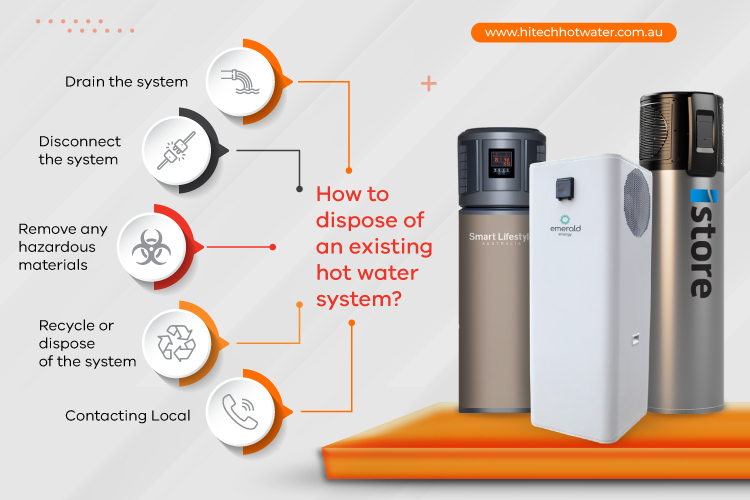
Proper disposal of an existing hot water system is vital to protect the environment and ensure the safety of those handling the equipment. The steps for disposing of an existing hot water system will depend on the type of system and local regulations. Generally, the process may include the following steps:
1. Drain the system
2. Disconnect the system
3. Remove any hazardous materials
4. Recycle or dispose of the system
5. Contacting Local
Relocating an existing hot water system
Relocating an existing hot water system can be a complex process that requires careful planning and professional installation. The steps for relocating an existing hot water system may include the following:
1. Assess the new location: The new location for the hot water system should be evaluated to ensure that it meets the requirements for proper installation, such as access to electricity, water, and proper ventilation.
2. Review the existing system: The current hot water system should be inspected to ensure that it is in good working condition and that all components are compatible with the new location.
3. Plan the installation: The process for relocating the hot water system should be planned out in advance, including the location of the new system, the routing of new plumbing and electrical connections, and any necessary modifications to the existing system.
4. Disconnect the old system: The old hot water system should be disconnected from the electrical and plumbing connections.
5. Install the new system: The new hot water system should be installed in the new location according to the manufacturer's instructions and local building codes.
6. Test the new system: The new hot water system should be tested to ensure that it works correctly and that all connections are secure.
Again, it's highly recommended to consult with a professional plumber and an energy consultant to make sure that relocating the hot water system is done safely and correctly.
Tempering Valves
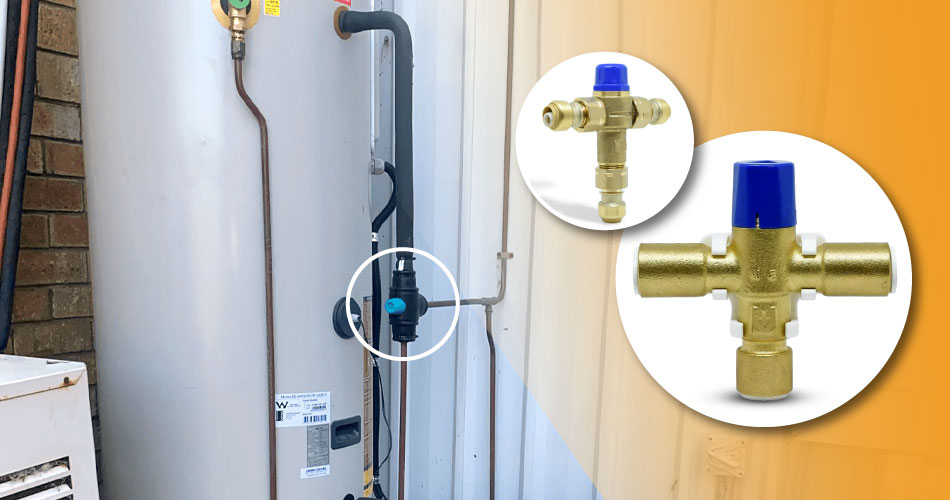
A tempering valve, also known as a mixing valve, is a device used in hot water systems to mix hot and cold water to provide a safe and consistent outlet temperature. The valve is typically installed on the hot water supply line. It is used to mix cold water with hot water to reduce the temperature to a safe level for use. This is particularly important in places like schools, hospitals, and other public buildings where large numbers of people may be using hot water simultaneously.
The valve is typically set to a specific temperature. It will automatically adjust the hot and cold water mix to maintain that temperature. This helps to prevent scalding, which can occur when water is too hot and also helps conserve energy by reducing the amount of hot water needed to achieve a safe temperature.
Tempering valves can be manual or thermostatic and can also be fitted with a temperature gauge to allow for easy monitoring. They are typically installed by a professional plumber and require regular maintenance to ensure they are working correctly.
Understanding the requirement of electrical and plumbing work during hot water system installation
A hot water system installation typically involves both electrical and plumbing work. For electrical work, it is important to ensure that the hot water system is connected to a power source capable of providing the necessary electrical current. This may involve upgrading the electrical service to the building or installing a dedicated circuit for the hot water system. It is also important to ensure that all electrical connections are made correctly and that all wiring is properly grounded to prevent electrical shock.
For plumbing work, it is important to ensure that the hot water system is connected to a water supply capable of providing the necessary water flow and pressure. This may involve installing or modifying new pipes to accommodate the new hot water system. It is also important to ensure that all plumbing connections are made correctly and that all piping is properly insulated to prevent heat loss.
It is highly recommended to hire a professional plumber and/or an electrician such as HiTech Hot Water to do the job. They have licensed plumbers and electricians with the knowledge and experience to ensure that the installation is done safely and correctly. They will also be able to advise you on any local codes and regulations that must be followed.
Comparison of different types hot water system installation cost
The hot water system installation cost for different types of hot water systems in Australia can vary significantly. Here is a rough comparison of the hot water system installation cost for some common types of hot water systems in Australia:
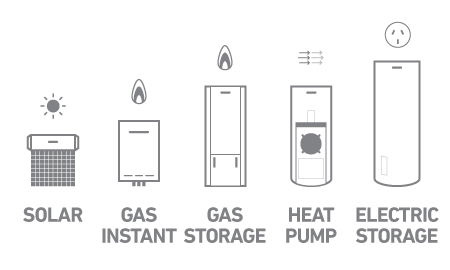
• Electric storage tank: $1,000 to $2,000
• Gas storage tank: $1,500 to $3,000
• Heat pump: $3,000 to $5,000
• Solar hot water: $5,000 to $10,000
• Instantaneous (tankless) gas: $3,000 to $5,000
It is important to note that these are rough estimates and the actual cost will depend on factors such as the size of the system, the location of the installation, and the specific brand and model of the system. Additionally, some states in Australia may offer rebates for certain types of hot water systems, which can help to lower the overall hot water system installation cost.

Conclusion
In conclusion, installing a heat pump hot water system can be cost-effective and energy-efficient for your home or business. The cost of the system itself can vary depending on the size and features of the unit, with prices ranging from around $1,500 to $5,000. However, it's important to keep in mind that hot water system installation costs can also vary based on the complexity of the installation and the location.
Additionally, it's important to consider the long-term savings that a heat pump hot water system can provide. These systems can be up to 70% more efficient than traditional electric or gas-fired water heaters, which can significantly save your energy bills over time.
When considering the installation of a heat pump hot water system, it's recommended to consult with a professional energy consultant to determine the best option for your specific needs and budget. They will be able to provide you with an accurate estimate of hot water system installation cost and help you choose the right system for your home or business.
Overall, investing in a heat pump hot water system can be a savvy decision for your home or business. With the right hot water system installation at the right cost, you can enjoy long-term savings on your energy bills and a more efficient and sustainable hot water solution.
Upgrade to a heat pump hot water system today and start saving on energy costs while reducing your carbon footprint. Contact us for more information and to schedule a consultation.

